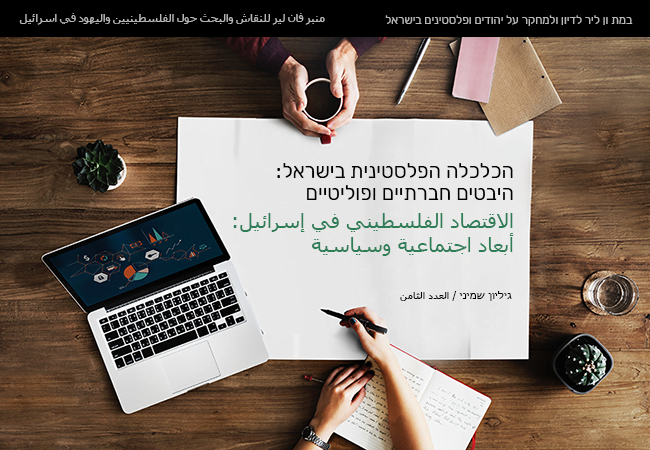Palestinians and Jews typically live not only in separate geographical and political spaces, but also in different realms of consciousness and memory. Each community is absorbed in commemorating its own heroes and victims, in a sealed world that has almost no connection to the world of the other side of the conflict. As Hillel Cohen put it, “one side’s heroes… must necessarily be the other side’s villains”.1Hillel Cohen, 1929: Year Zero of the Arab-Israeli Conflict, translated by Haim Watzman (Waltham, MA: Brandeis University Press, 2015), p. 259. For most people, on the other side they are all blood-thirsty killers, whereas their own camp is pure. The ability to question these perceptions, even slightly, is one of the main challenges we face if we want to change the present situation. In this short essay I would like to point to one possible course of action toward creating shared spaces of memory.
From the 1929 riots to the events of May 2021, during waves of street violence between Jews and Palestinians – as opposed to organized military violence – there have almost always also been acts of rescue: Palestinians risked their lives to protect Jews from attacks by other Palestinians; Jews shielded Palestinians with their bodies from lynching by Jews. These cases are of course not frequent, but they are more common than what most of us suppose.
Here are a few examples from headlines in the media in recent years: “Victims of a Violent Mob in the North were Rescued by Arab Residents” (Channel 13, May 16, 2021); “They Came to Or Akiva to ‘Protect It from Arabs’ and Found Themselves Protecting an Arab from Lynching” (Ha’aretz, May 26, 2021); “The Arab Doctor Acted as a Human Shield for the Injured Jewish Man” (Kikar Hashabat, May 13, 2021); “Man Who Helped Arabs Attacked in Jerusalem: ‘If I Had Not Intervened, They Would Have Been Murdered” (Ynet, August 26, 2018). As mentioned, this is a phenomenon that recurs over the years: “Taxi Drivers Shielded Arabs with Their Bodies After the Bombing in Tel Aviv,” read the headline in Hadashot on September 11, 1990, in a report about taxi drivers in Tel Aviv’s central bus station who protected Palestinian passers-by from attack by Jews. And there are many other examples.
These are dramatic, inspiring stories – and they are typically forgotten or deliberately suppressed. Only a few of them find their way to the media; some end up as no more than a passing post on Facebook or a line in a book, and many live on only in the private memories of individuals or families. With few exceptions – such as the rescue of Jews in Hebron in 1929, and the case of Bella Freund, who acted as a human shield for a Palestinian who was caught by an angry mob after stabbing two children in the Jerusalem market in 1992 – rescue stories almost never leave an imprint in the collective memory.
What can we learn from these acts of rescue, or what can we teach through them? Giving greater presence to rescue stories in the public space and discourse has the potential to contribute to the moral education of both peoples, by teaching that “they” are not all bad – and also that “we” are not all good. Sometimes a story about an Israeli who protected Palestinians from attack by other Israelis is the most effective way to cope with denials of such attacks. Besides challenging the uniform image of the different communities, emphasizing acts of rescue can serve to celebrate and commend the ability to stand up to violence, sometimes effectively. In other words, the acts of rescue show us that human solidarity across communities is possible, even in the worst of times; that there are killers on our side, too, and that not everyone on the other side is a killer; and that we do not have to stand aloof in the face of violence.
More broadly, these stories have the power to contribute to alternative understandings of the notion of “heroism”: the figures of the rescuers may challenge the assumption that a hero is someone who kills the enemy. Can Mina Albert (whose story is recounted in Cohen’s book), a woman who saved Palestinians from lynching by Jews in Jerusalem in 1929, become a heroine in the eyes of both Jews and Palestinians, instead of or alongside the “military” heroes? Perhaps not anytime soon, and certainly not for everyone; but so long as figures like hers are almost entirely absent from consciousness and from memory, it will be that much harder to undermine the predominant notion of heroism.
Why do acts of rescue so rarely make it into the mainstream of consciousness and commemoration? One of the reasons is precisely their subversive potential: we do not want to undermine our narrative, do not want to hear about murderers from among us and rescuers from among them. And there are also those who do not want to celebrate the rescue: in the eyes of many Israelis, what Bella Freund did, for example, deserves condemnation and not praise. But it is important to emphasize that no deliberate censorship is involved here – the problem is more sophisticated: stories of rescue do not fit into the existing traditions of memory. We have no patterns, no formulas, with which to shape stories of rescue. As a consequence, these stories are typically told in a superficial manner, with little context and without any mention of previous acts of rescue – unlike a report about acts of violence, which automatically follows historical patterns. The rescuer is not among the familiar cast of characters through which we frame events and understand them: the brave officer, the alarmed passer-by, the hot-blooded youth, etc. The difficulty of fitting rescuers into the existing patterns makes it harder to integrate them into the map of our collective memory; therefore, even when they do briefly make it on air, they quickly fade away from public consciousness.
There does exist a rare and perhaps unique example of an act of rescue being commemorated, and it is the exception that proves the rule – and also proves the limits of the exception. In the Purim of 1992, Abed El Ghani, a resident of Jaffa, tried to protect with his own body Jewish youths who were attacked with a knife by a Palestinian from Gaza. El Ghani died of his wounds, as did Ilanit Ohana, one of the teenagers he tried to protect. One year later, a small street in Jaffa was named after El Ghani, and a nearby park was named Gan Hashnayim (“the garden of the two”), in both of their names. But to date, there are no plaques or signs in the garden explaining its name, and no other form of commemoration, so visitors have no way of learning about the attempted rescue. The commemoration in this case concerns only the rescue of Jews from attack by Palestinians; and the absence of reciprocity is especially conspicuous in light of the neglect and discrimination suffered by the Arabs of Jaffa. El Ghani did not become a prominent figure in either the Jewish or the Palestinian national memory, and no one has taken up the task of systematically continuing to disseminate this story of rescue. One of the lessons of this case is that the commemoration of rescuers will probably have greater effect if it is carried out as a joint Jewish-Arab action. This kind of joint action would also help avoid a manipulative presentation of the act of rescue, as sometimes happens in the traditional and social media, which often cast Palestinians who help Jews as “the good Arab” whose “goodness” merely proves the “evilness” of all the rest.
Stories that describe a past or a present of successful “co-existence” often tend to be naïve and to ignore the occupation and the violence, as in the nostalgic call for “meetings over a plate of hummus.” But stories of rescue are relatively immune to this innocent sterility: they stem from the fear of lynching and are steeped in it, therefore they are by definition rooted in the mutual violence and force us to think about human solidarity precisely within the context of violence, and they can be found on both sides.
As mentioned, in the vast majority of cases, acts of rescue do not manage to become fixed in the discourse and collective consciousness. One reason for this is a lack of any deliberate action to this end on the part of the agents of memory; without such deliberate action it is hard for a story to survive given the intense competition for historical attention and for the resources of commemoration. And if that which is not commemorated is forgotten, then there needs to be a conscious and deliberate effort to commemorate acts of rescue in the collective consciousness. While it is true that many aspects of commemoration depend on decisions by official governmental bodies, there is still a wide range of possible courses of action by the various players of civil society. They can name a certain enterprise after Mina Albert; place commemorative plaques with explanations in Jaffa’s Gan HaShnayim; produce a documentary about the taxi drivers in the central bus station in 1990; build websites that provide toolkits for learning about acts of rescue – they will be used. Giving widespread presence to the stories of rescue in the consciousness of both Palestinians and Jews will not bring peace, but it may slightly erode the hatred and the one-sided perception of the other. In this day and age, that is nothing to scoff at.
- 1Hillel Cohen, 1929: Year Zero of the Arab-Israeli Conflict, translated by Haim Watzman (Waltham, MA: Brandeis University Press, 2015), p. 259.

















